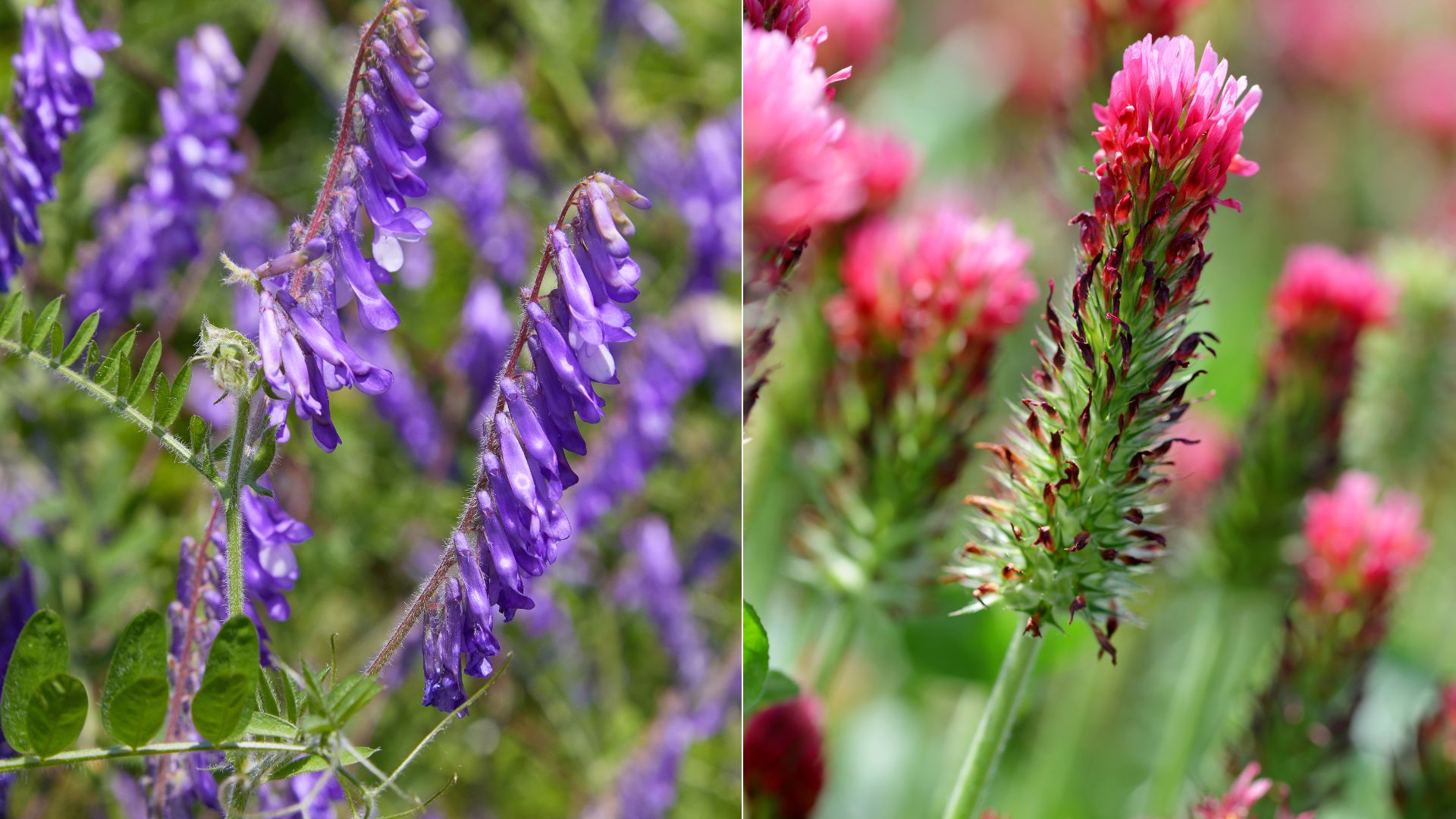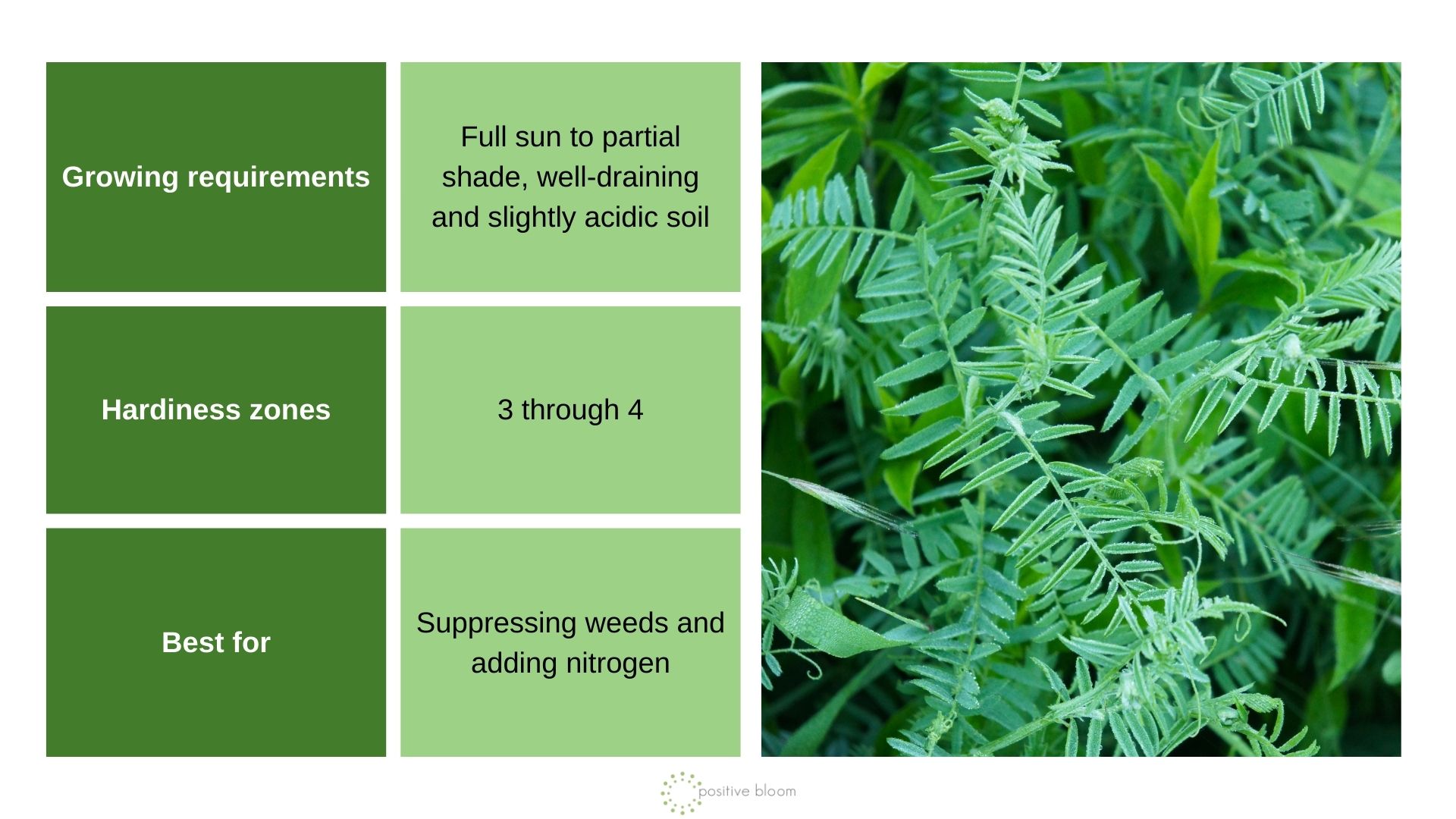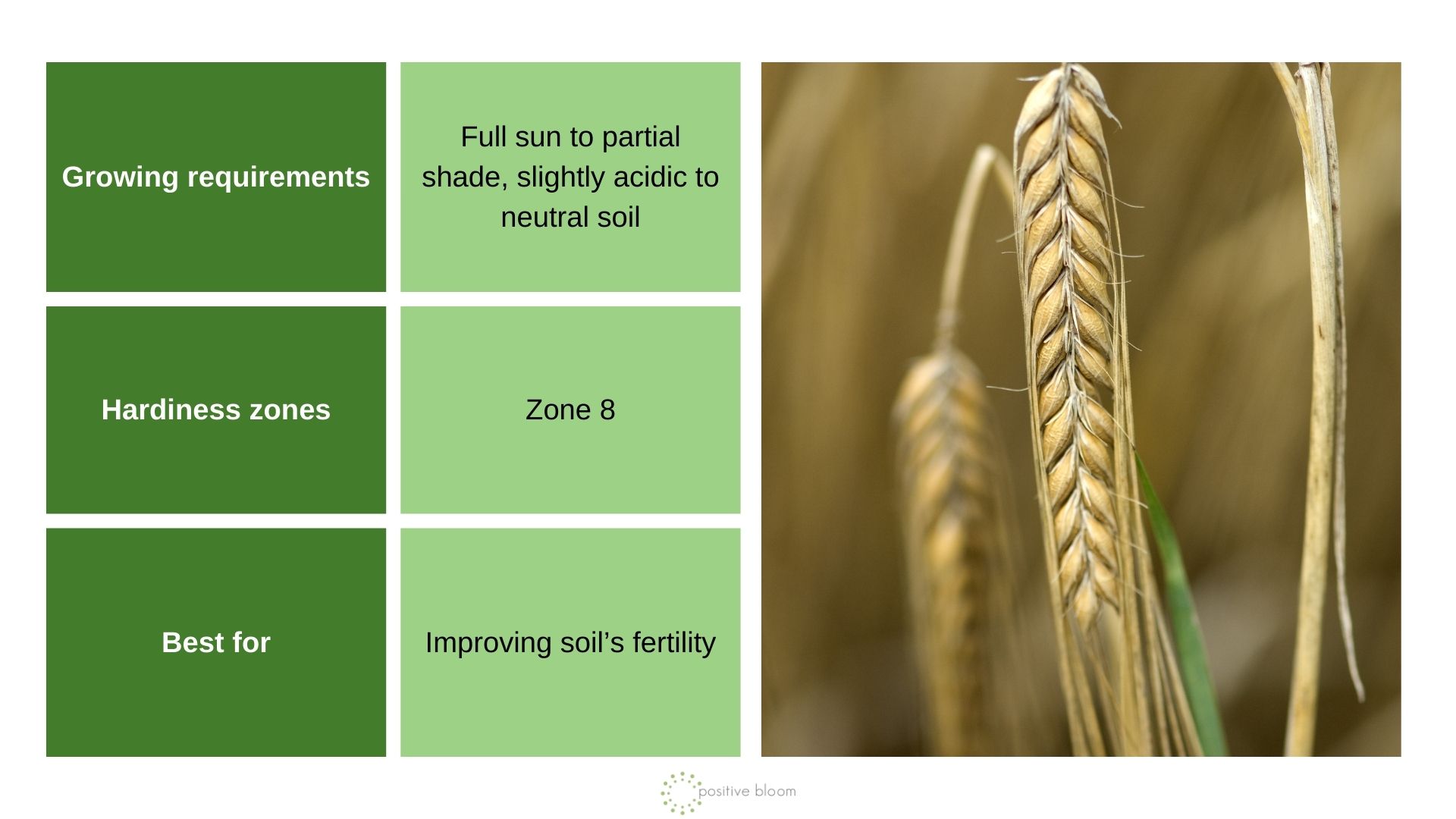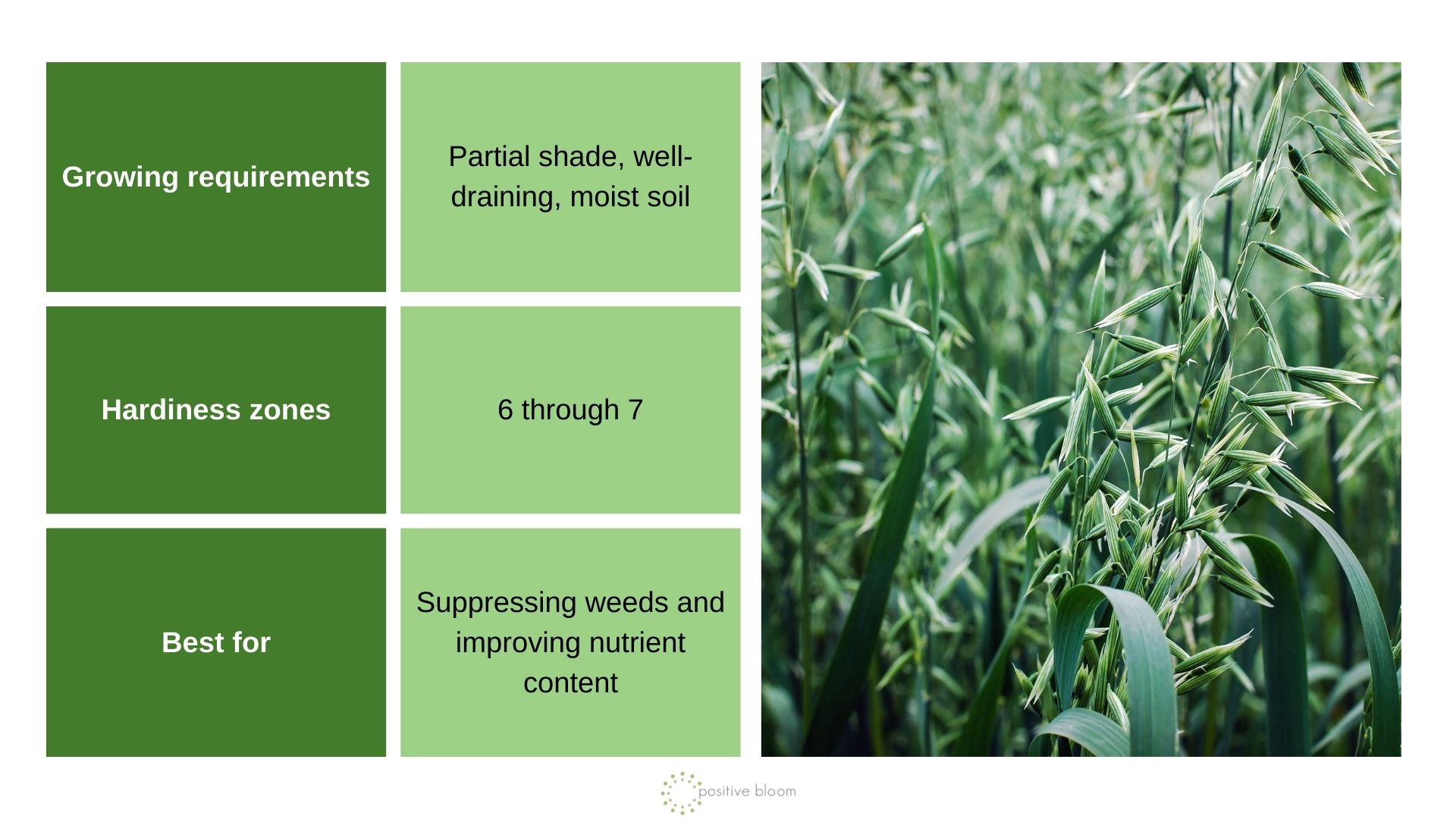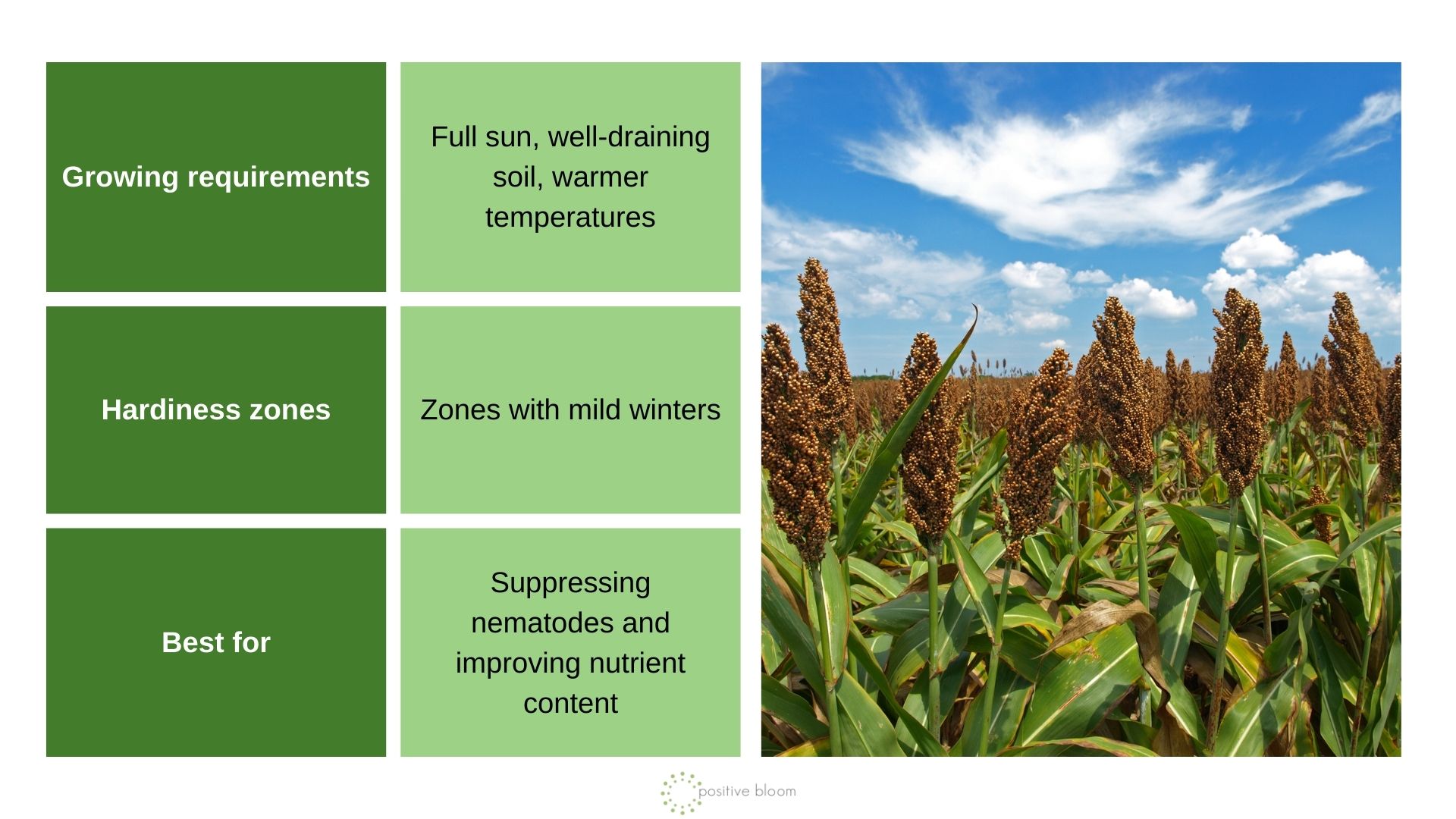As soon as the leaves fall on the ground and the gardening season comes to an end, it’s the perfect time to invest in the future fertility of your soil!
Fall cover crops are the best way to do it, as these unique plants can work under the winter chill to improve soil’s fertility, break up soil compaction, and also protect from soil erosion. You can choose between frost-tolerant and winterkill crops.
Frost-tolerant cover crops should be terminated in the spring while winterkill varieties are purposely chosen because they deteriorate on cold winter days.
In this article, we are going to explore the world of fall cover crops and how they can transform your garden. Discover the benefits, the best choices, and the simple steps to ensure your soil is filled with nutrients.
Now, let’s get started!
1. Winter Wheat (Triticum Aestivum)
We are starting off with winter wheat, which is a cool-season cereal grain that provides excellent ground cover during winter and fall. It provides erosion control thanks to its deep roots that can grow up to 3.5 feet deep into the ground.
These crops have dense growth and can easily suppress weed growth, thus making sure that the nutrients are not depleted. Plus, winter wheat can sequester carbon in the soil, which basically means that it can absorb carbon from the air and release it into the soil.
Sow Triticum aestivum seeds from mid-september through early November. Make sure that the seeds are half an inch to 1.5 inches deep into the soil. Cover them with a thin layer of compost and keep them moist. They should grow ideally in full sun and partial shade.
It’s crucial to terminate them in the spring as they would compete for nutrients with your spring crops. You can mow them or prune them at the base. Before planting your veggies in spring, let the residue of fall cover crops decompose for two to three weeks.
You might also be interested in: 10 Captivating Winter-flowering Shrubs To Plant In Fall
2. Hairy Vetch (Vicia Villosa)
Hairy vetch are also cover crops that can serve as a pollinator patch in addition to fixing nitrogen from the air and enriching the soil with this essential nutrient. These are leguminous cover crops that produce trailing stems and vibrant green leaves.
These fall cover crops can reach up to 3 feet tall and 12 feet wide. Hairy vetch are cold-hardy and ideal for fall sowing. Make sure to sow their seeds about 1.5 inches deep. Sprinkle soil and compost over them, and water thoroughly. Maintain soil moisture to encourage growth.
These frost-hardy cover crops should also be terminated. Terminate hairy vetch by mowing or tilling it when it’s in full bloom but before it sets seed. Allow it to break down in the soil.
3. Barley (Hordeum Vulgare)
Barley is a versatile cereal grain that provides an excellent fall and winter cover for zones 8 and warmer. It features slender, green leaves and quickly establishes a thick stand. It also produces fibrous roots that can grow about 6.5 inches into the ground.
It improves soil aeration and water retention. This plant also improves soil fertility by putting nitrogen and other minerals back into the soil. Plus, barley also produces allelopathic compounds that can actually reduce weed growth.
Barley is a great cover crop for areas with poor soil and irregular watering. Sow the seeds up to 2 inches deep in the soil and sprinkle soil over the top. You should sow the seeds before November as they cannot survive harsh winters.
If you live in zone 7 or colder, sow them in late summer so that they can produce strong roots before the frost kills them. To terminate these plants, you can simply mow them or chop them with pruners. Tilling is also an option to make nutrients readily available.
4. Cover Crop Blends
There’s also an option to buy pre-mixed cover crop seed blends and get the most out of several varieties at once. However, you can also create your own mix before planting the seeds!
You should first pay attention to nutrient enhancement – several legumes like vetch, clover, or peas can be combined to fix nitrogen in the soil. For soil compaction, consider mixing turnips, barley, and daikon radish.
If you want to avoid pests and diseases, combine sudangrass, mustards, and forage radishes since they produce compounds like glucosinolates that can naturally suppress damaging organisms.
Lastly, for erosion control, you can mix crops such as oats and rye because they have deep and fibrous root systems.
Also read: 9 Effective Ground Cover Plants To Prevent Weeds
5. Oats (Avena Sativa)
Oats are a cool-season grain cover crop that produce vibrant green leaves and slender stems. They germinate and grow quickly, thus providing an excellent ground cover during the fall and winter.
They produce fibrous roots that can reach about 6 to 8 inches in the ground, which means that they can prevent erosion and add organic matter to the upper layers.
Oat seeds should be sown 4 to 6 weeks before the first frost date. Sow them 1 to 2 inches deep and sprinkle a thin layer of soil over them. They can grow up to 4 feet tall in regions with mild winters, so make sure that they have enough space in the garden.
These fall cover crops are winterkill kinds, which means that they will die naturally due to heavy frosts. You can use remedies from this plant and add them to your compost pile. Get rid of roots with a hoe or you can add a thick layer of compost over them.
If you live in warmer regions, you can chop down your oats in the spring or simply mow them. Make sure to do this before they head out and produce seeds!
6. Crimson Clover (Trifolium spp.)
If you want to improve nitrogen content in the soil and also spruce up your garden a bit, then crimson clover is the perfect plant for you. This is a nitrogen-fixing legume cover crop that produces crimson-red flowers that combine ideally with lovely green leaves.
You should sow clover between August and November. When planting, make sure that the seeds are about ¼ to ½ inch deep. Keep them moist and they should germinate for about 7 to 10 days.
They survive winters and produce nectar-rich flowers in the spring. They are also beneficial for attracting pollinators and predatory insects. If you live in zones 5 or colder, clover will be winterkilled.
If you live in warmer regions, tilling or tarping are great options for terminating. Tarping basically means suppressing the plant before you plant other vegetable crops. Mow them very low and then put a tarp over the bed and leave it there for 1 to 3 weeks. Lack of sunlight will kill the clover.
Also read: Discover The Best Time To Plant A Clover Lawn
7. Winter Rye (Secale Cereale)
Winter rye is the perfect plant to keep your garden vibrant and lively during the winter season. This cold-hardy cereal grain cover crop produces lush, green foliage and quickly establishes a protective ground cover.
This cover crop offers amazing erosion protection and prevents compactions beneath the snow. It suppresses weed growth and keeps your soil loose with its deep roots. This is a great choice for compact soils or ones with hardpan layers.
Sow winter rye seeds in November if you live in a warmer climate. But, if you live in zones 3 through 7, do so in late summer or early fall. Sow densely and add some extra seeds in heavily compacted soils.
They will germinate for about a week or two. Make sure to add moisture if there’s no rain. These cover crops will grow between 3 to 6 feet tall by spring. Keep an eye out for deer because they absolutely love munching on winter rye.
Keep in mind that you should terminate them before they produce seeds. You can do it with lawn mowers, loppers, or by simply cutting them to the ground with pruners. Terminate them one or two weeks before planting in spring.
You can also leave it as mulch or compost the leftovers. You can give winter rye to chickens if you have any – even better, your chickens can harvest the crop for you if you can fence them over a garden bed!
8. Austrian Winter Peas (Pisum Sativum)
Here’s yet another leguminous cover crop that is well-suited for colder climates. They create a dense carpet of greenery and can fix nitrogen from the air, enriching the soil. Plus, they also produce adorable, pea-like leaves that can really make your garden look more lively!
Sow the Pisum sativum seeds about 1 to 2 inches deep and cover them with 2 inches of soil. Plant them in November or you can also do it earlier, just make sure that they are about 8 inches apart because they grow vigorously.
Water them thoroughly and make sure that the soil is relatively cool. Hot summer weather can stunt their growth so don’t sow them too early!
Terminate Austrian winter peas by mowing or tilling them in early spring before they set seed. Once you spot flowers, it’s terminating time. You can also cut them at the base and leave the residues to decompose before planting your spring crops.
9. Sorghum/Sudangrass (Sorghum x Drummondii)
We saved the best for last!
Meet Sorghum/sudangrass, a grass cover crop that is known for its rapid growth and remarkable resistance to plant-damaging nematodes. These are excellent for zones with milder climates.
Their seeds germinate at temperatures of about 60 degrees Fahrenheit, which is why they should be sown in late summer. You can grow them throughout winter if you live in zones 9 or warmer. Remember, these are winterkilled and not suitable for regions with harsh winters
When planting, make sure to sow the seeds up to one inch deep and cover them with soil lightly. They take 14 to 21 days to germinate, and they need consistent moisture and warmth. These fast-growing grasses can grow up to 7 feet tall.
Terminate them in early spring and use it as mulch. You can simply prune them 1 or 2 weeks before spring planting. Make sure that they don’t produce seeds.
You might be also interested in: 10 Captivating Winter-flowering Shrubs To Plant In Fall

